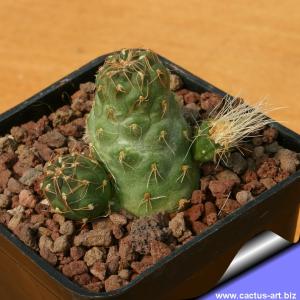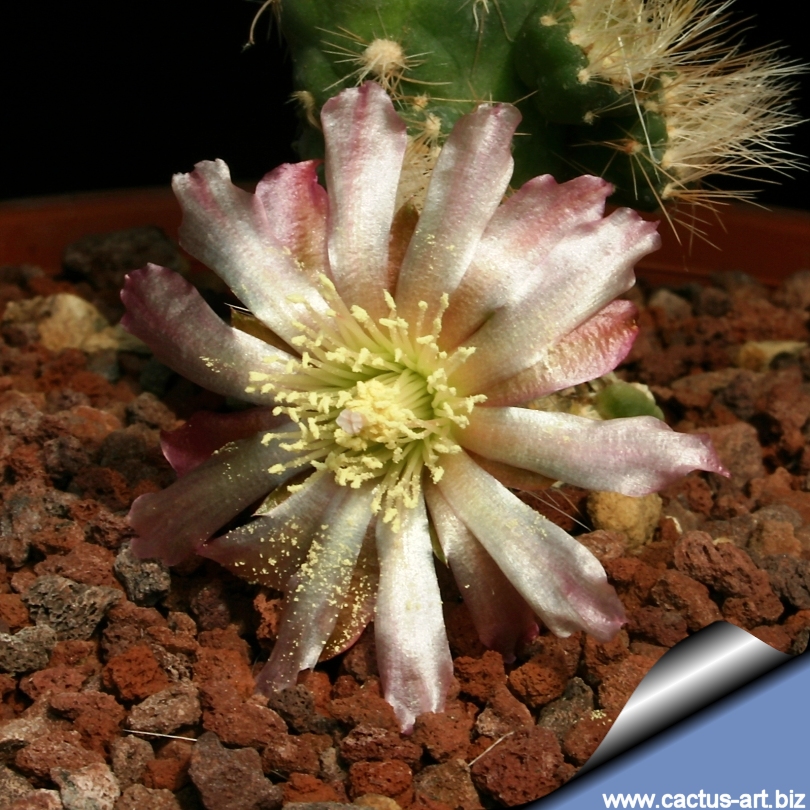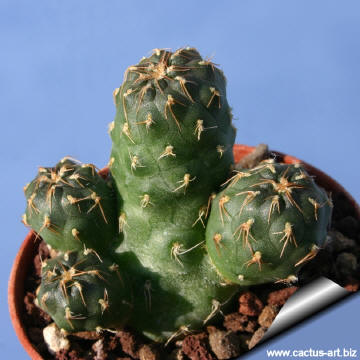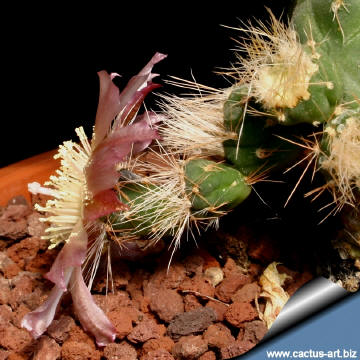-
x
Descrizione
|
Piccola specie geofitica con grosse radici tuberose che in natura resta quasi completamente infossata nel terreno. I fiori di circa tre cm in diametro variano dal bruno al rosa-rosso fino al giallo chiaro, ma raramente possono anche essere bianchi.
Family: Cactaceae (Cactus Family) Scientific Name:Puna subterranea (R. E. Fries) R. Kiesling Conservation status: Listed in CITES Appendix II Distribution: Northwest of Argentina, province of Jujuy to, Potosí, Bolivia at high elevations. Habitat: Grows not on mountain slopes but in the Punas, the plateaus of the the high Andes. This area is not so dry as that of P. clavarioides and is relatively mild and can support at least some shrubs and grasses. Altitude 3000-3500 m. Maihuenopsis subterranea (R. E. Fries) E. F. Anderson 1999 Opuntia subterranea R. E. Fries 1905 Pseudotephrocactus subterraneus (R. E. Fries) Kreuzinger 1935 Tephrocactus subterraneus (R. E. Fries) Backeberg 1935 Cumulopuntia subterranea (R. E. Fries) F. Ritter 1980 Puna variiflorus Tephrocactus variflorus Backeberg 1962 (non val. publ.)
|
|
|
Sometime Puna subterranea produces flowers from the areoles on the hypantium of another flower. In the photo it is showed a chain of three flower originated on the flower tube of the previously produced flower. |
Morphology (Identifying Characteristics): Small plant geophytic opuntioid cacti with very tuberous root which in remains half buried in habitat, showing approximately 1 cm. from the ground. Plants have usually few segments (up to 6). But at the northern localities this species can grow with dozends of segments. The form "incahuasii" with greener and thinner stems forms large clumps with more than 100 heads. This species is very variable and there are many forms of Puna subterranea. It looks like a small Tephrocactus, but the bloom, fruit and the seeds clearly show its autonomous nature.
Growing tips: This species resists cold well if it is dry and need to be kept in a cool place during winter rest (this is important for the flowers as well as for their health) Without this cool winter period they normally wont get many buds.. This mountain cactus - because of the elongated fat taproot - necessitate deep pots and a well drained mineral potting mix. They are susceptible to overwatering, but need enough water during vegetation. Requires full sun. Specimens in culture, in special grafted ones, presents a bigger amount of glochids than the ones growing in their habitat. Need a sufficient amount of air.
Propagation: Usually propagated by cuttings and grafting . Grafted plants in culture are most common and sprout strongly. But it is also feasible to root them but they grow much slower on their own roots and takes various years prior to they bloom.
|




